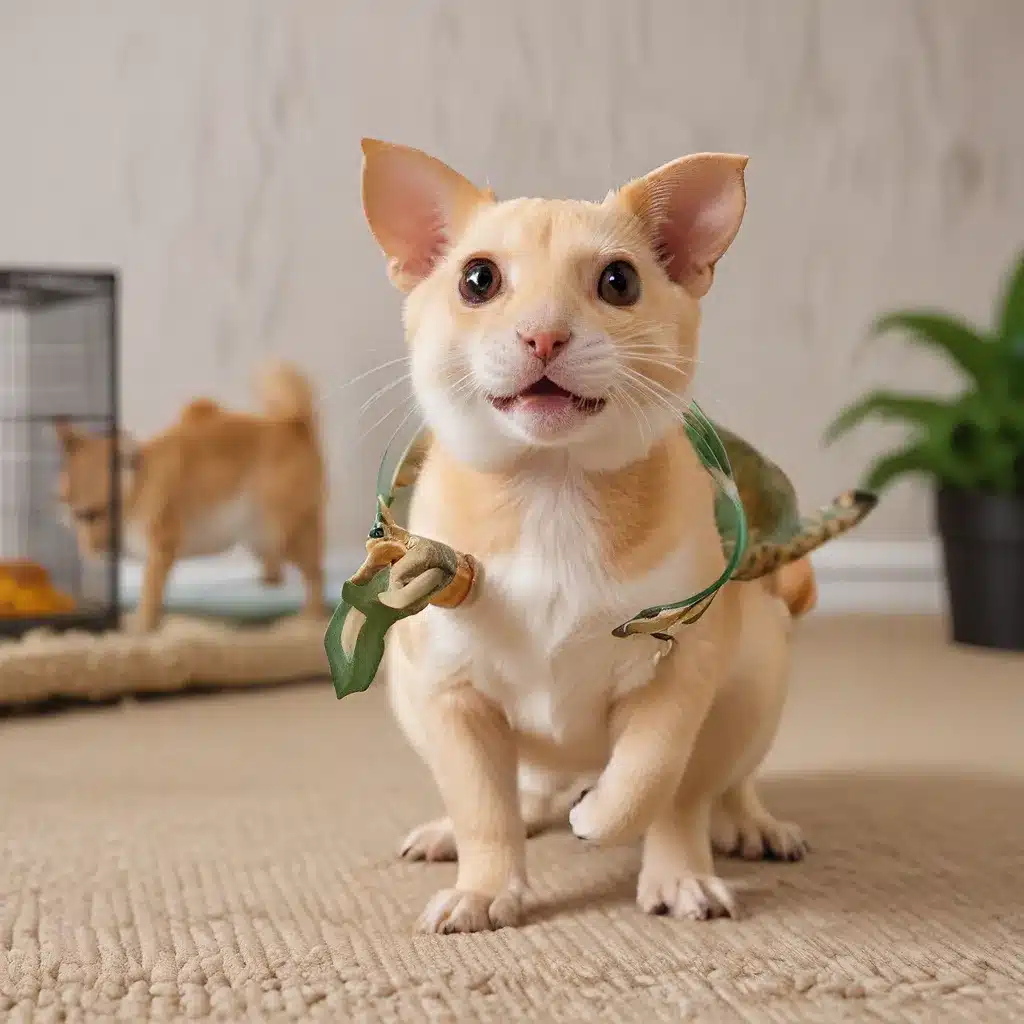
Calling all exotic pet owners! Are you struggling to keep your furry (or scaly, or feathery) friends active and energized? Well, you’ve come to the right place. In this comprehensive guide, I’ll dive into a variety of engaging activities that will have your exotic pets prancing, hopping, and slithering with joy.
Unlocking the Benefits of Exercise for Exotic Pets
Let’s face it, our exotic companions aren’t your run-of-the-mill house pets. They have unique needs, quirks, and energy levels that require a bit more creativity and effort on our part. But trust me, the payoff is worth it! Regular exercise can do wonders for your pet’s physical and mental well-being.
As the experts at Pine Creek Animal Hospital point out, exercise helps prevent obesity, a common issue for exotic pets. And who doesn’t want a healthy, happy, and energetic companion? Plus, a well-exercised pet is less likely to engage in destructive behaviors out of boredom.
But that’s not all! Exercise can also help reduce stress and anxiety, improve sleep patterns, and even strengthen the bond between you and your pet. Honestly, it’s a win-win situation all around.
Tailoring Activities to Your Exotic Pet’s Needs
Now, I know what you’re thinking: “But how do I keep my ferret, iguana, or parrot entertained?” Fear not, my friend. The key is to understand your pet’s unique needs and preferences, and then get creative with activities that cater to their natural instincts and behaviors.
Feathered Friends: Avian Exercise Ideas
Let’s start with our winged wonders, the birds. These flighty creatures thrive on the opportunity to spread their wings and explore. According to the Chicago Veterinary Medical Association, providing your feathered friend with a large and enriched cage or aviary is crucial. This gives them ample space to flap, hop, and even play.
But that’s just the beginning! You can also set up safe, supervised “flight time” outside the cage, allowing your bird to stretch its wings and get some heart-pumping exercise. Just make sure the area is bird-proofed and free of any potential hazards.
Puzzles and foraging toys are another great way to keep your avian companion engaged. Hide their favorite treats in various nooks and crannies, and watch them use their natural problem-solving skills to seek them out.
Scaled Sensations: Reptilian Exercise Routines
Now, let’s talk about our scaly friends, the reptiles. While they may not be the most energetic creatures, they still require regular physical activity to maintain their health and well-being.
For example, Dr. Marty Becker from Vetstreet suggests creating a secure outdoor enclosure or “reptile run” where your lizard or snake can bask in the sun and explore their natural environment. Just be sure to monitor them closely and provide plenty of hiding spots and enrichment.
Indoor activities can include setting up an obstacle course with ramps, logs, and hiding spots. This not only gets their bodies moving but also engages their natural curiosity and problem-solving skills.
Furry Friends: Mammalian Exercise Ideas
Last but not least, let’s talk about our furry exotic pets, such as ferrets, chinchillas, and sugar gliders. These little guys are full of energy and need ample opportunities to burn it off.
One fantastic way to get them moving is by creating a dedicated play area or “exotics playground.” This could be a large, secure enclosure with tunnels, platforms, and interactive toys. Rotate the toys and activities to keep things fresh and exciting.
You can also try clicker training, which not only provides physical exercise but also helps stimulate their minds. Teach them simple tricks or commands, and reward them with treats and praise.
Making Exotic Pet Exercise a Fun Family Affair
Now that we’ve covered some great activity ideas, let’s talk about how to make exercise a fun and engaging experience for you and your exotic pet.
First and foremost, remember that every pet is unique, so it’s important to experiment and find what works best for your furry (or scaly, or feathery) friend. Pay attention to their individual preferences and energy levels, and be prepared to adjust your approach accordingly.
At Golden Exotic Pets, we believe that exercise should be a joyful and enriching experience for both you and your pet. So, why not turn it into a family affair? Involve your kids or other household members in the process, and make it a bonding experience for everyone.
Incorporate elements of play, such as interactive toys or obstacle courses, to keep things exciting and engaging. And don’t forget to document your pet’s progress and celebrate their achievements – a little positive reinforcement can go a long way!
Overcoming Challenges and Staying Motivated
I know, I know, it’s not always easy to keep up with your exotic pet’s exercise routine. Life can get hectic, and it’s tempting to let it slide. But trust me, the effort is more than worth it.
One of the biggest challenges is finding the time and energy to dedicate to your pet’s exercise needs. But remember, even small bursts of activity throughout the day can make a big difference. Try incorporating exercise into your daily routine, whether it’s a quick play session during your lunch break or a dedicated weekend activity.
Another common obstacle is resistance from your pet. Some exotics can be, well, a little stubborn when it comes to trying new things. But don’t give up! Patience, positive reinforcement, and a little creativity can go a long way in getting your pet on board.
And let’s not forget about the dreaded “exercise burnout” – that feeling of being completely exhausted and uninspired. When this happens, take a step back, re-evaluate your approach, and look for ways to mix things up. Try a new activity, involve the whole family, or even seek out the guidance of a professional trainer or veterinarian.
Remember, your exotic pet’s health and happiness should always be your top priority. So, let’s get moving and show those furry, scaly, and feathery friends just how much we love them!

